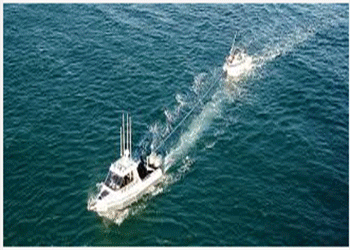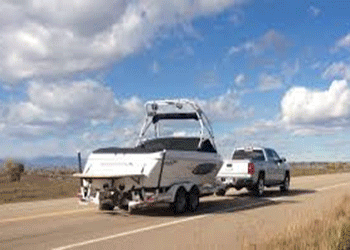Boat Towing Lake Tahoe California
While some people are lucky enough to have lakefront or oceanfront property, the rest of the boating community is typically stuck transporting their boats (often for many miles) which usually means wheeling out the trailer and hitting the road.

But towing a boat, like all types of towing, needs to be undertaken with care. Seasoned pros might make it look simple in Lake Tahoe California.
For that, when you break down on the water, you can’t pull over to the curb and walk home, so true. Despite the best maintenance regimen and careful planning, circumstances beyond your control happen often in the demanding briny environment. Engines and components break down unexpectedly. Fuel gauges are not very accurate, Batteries fail or a super-negative low tide sucks more water off that sandbar than you have ever seen before, leaving you high and dry. These and similar incidents are why a good towing policy is invaluable.
If you love being on the lake, you can’t go wrong in the Golden State and less in the Lake Tahoe California. When towing your boat to your favorite fishing or sailing spot or especially if you are traveling to the state, it is important to know the California laws.
With the proliferation of affordable commercial assistance outfits in Lake Tahoe California, plus the constantly improving reliability of marine engines, it is not nearly as common as it once was for recreational boaters to tow other boats. That’s a good thing. Safe towing requires the right equipment and a good bit of know-how, and it is best left to professionals.
Occasionally, though, situations still arise in which you have little choice but to accept a tow from a friend or Good Samaritan, or offer one yourself. If you ever find yourself in one of those situations, here are a few things to keep in mind.
- Avoid coming alongside the other boat. Except in the calmest of conditions, coming alongside another boat is a recipe for trouble. Wave action can slam the boats together, and, worse yet, crewmembers’ extremities can get caught between them. Instead, throw the tow line to the other boat from a distance.
- If possible, attach the tow line to the bow eye. The bow eye (where the winch strap on the trailer attaches) is generally the best place to attach the tow line to the towed boat. On some boats, though, it can be difficult to reach from inside the boat.
- Use bowlines to create loops. If you need to tie the tow line to something like a bow eye, use a bowline to make the loop. Bowlines don’t slip and don’t tighten up under pressure well; they do, but not nearly as much as most other knots. Thus, they can be untied after the tow without too much trouble.
- Use plenty of lines. You should use an absolute minimum of 50 feet of tow line; 100 feet is much better. Remember that the boat in tow has no means of slowing down, so a longer line is an important safety measure. It also acts as a shock absorber.
- Watch your prop(s). If you’re doing the towing, don’t just throw your tow line overboard before getting under way; it’s all too easy to wrap it around your prop(s). Rather, keep it on deck and have a crewmember pay it out slowly as you get moving.
- Stay in constant communication. You should be able to instantly communicate with the crew of the other boat, and vice versa. Cell phones will work, but VHF or FRS two-way radios are faster. If you can’t use radios or phones, work out a simple set of hand signals for slowing down, speeding up, stopping and cutting loose.
- Leave the drive down on the towed boat. Outboards or outdrives of boats in tow should be left down to provide directional stability. Obviously, it’s important that they’re not turned on one side or the other. If the towed boat still “yaws” (swerves from side to side), try shifting weight (crew and gear) toward its stern.
- Keep a knife readily available. If you’re doing the towing, you should always be ready to cut loose the towed boat. The most obvious reason to do so is if it begins to sink, but there could be plenty of other reasons. It’s a good idea for the crew of the boat in tow to also keep a knife ready in case of an emergency.
- Wear your PFD. Towing, even in the best conditions, is potentially dangerous. Everybody on both boats should be wearing a PFD throughout the operation.

Hopefully, all of your boating experiences are happy ones, but if you do have problems with your boat when you are out on the water, there are companies can help.
If you are towing a boat for the first time in Lake Tahoe California, no precaution is too great. Boating may be a blast, but towing can be treacherous. Practice towing on back roads with low traffic levels to get used to turning, backing, braking and other necessary maneuvers without the pressure of heavy traffic on fast streets.
If there’s a question about your equipment or your loading, ask an expert. Perhaps most importantly, pay attention to dangerous weather situations like high winds that could cause your trailer to swerve and jackknife. If those types of conditions exist, then postpone or pull over.
Driving with bad machinery and a lack of skill under unsafe conditions can be bad enough in a car. Adding a couple thousand pounds of cargo in a poorly-loaded trailer to the equation should be more than enough to make you cautious.